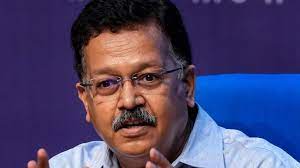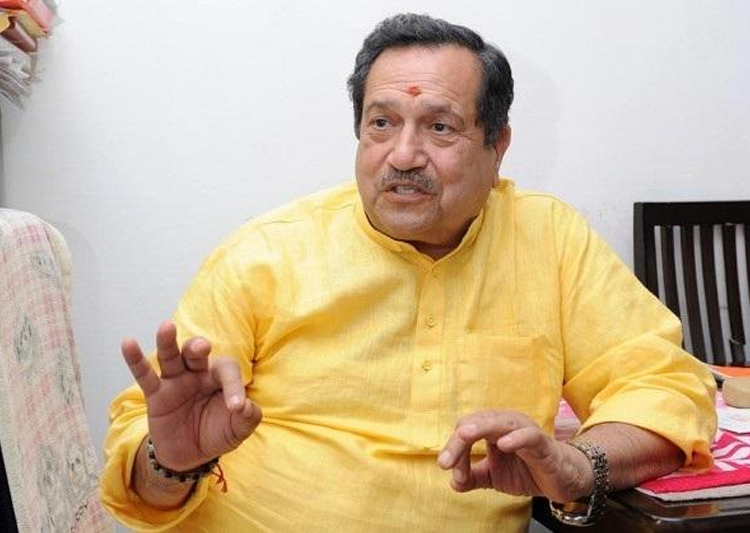Centre asks states to keep close vigil on Covid spread, chalk out plans

New Delhi: Amid rising cases of Covid, the Centre on Friday asked eight states including Uttar Pradesh, Tamil Nadu and Maharashtra to maintain a strict watch and take preemptive action in any area of concern to control any emerging spread of infection.
Underlining that Covid is still not over, Union Health Secretary Rajesh Bhushan in a letter to Uttar Pradesh, Tamil Nadu, Rajasthan, Maharashtra, Kerala, Karnataka, Haryana and Delhi urged them to remain cautious against laxity at any level saying that may nullify the gains made in pandemic management so far.
The country has been witnessing a consistent rise in COVID-19 cases since March, with 10,262 cases reported in the week ending April 20. A rise in positivity rate has also been noted across the country, with 5.5 per cent positivity reported in the week ending April 19 against 4.7 per cent positivity reported in the previous week, Bhushan said.
“This is a cause of concern,” he stated.
While the rates of hospitalization and deaths due to COVID-19 have remained low, states or districts reporting higher number of cases may indicate a possible localized spread of infection thus necessitating a closer look at these states or districts (high daily cases and/or high-test positivity rates) and the need to institute requisite public health measures to control and contain such surges in the initial stages, he said.
“It is also critical to ensure timely and regular updating of data to assist in accurate monitoring of the situation. It is essential that the State must maintain a strict watch and take preemptive action if required in any area of concern to control any emerging spread of infection. Regular monitoring and follow-up action are crucial,” Bhushan said.
While the five-fold strategy for control of pandemic – Test-Track-Treat-Vaccination and adherence to Covid appropriate behaviour – remains the time-tested approach, it is critical for the state health departments to institute prompt and effective public health measures with a key focus on the aspects such as strengthening Covid surveillance in all districts and monitoring trends of influenza-like illness (ILI) and SARI cases in all sentinel surveillance sites on a regular basis and ensure its reporting through IDSP-IHIP network, he said.
He also urged them to focus on maintaining adequate levels of testing (especially in emerging hotspots, ILI and SARI cases) in all the districts while maintaining the recommended share of RT-PCR and Antigen tests.
The focus should be in areas reporting high case positivity and new clusters of cases, Bhushan said and asked them to increase the number of Covid-positive samples sent for Whole Genomic Sequencing through the INSACOG network of laboratories, especially from any new clusters of cases detected in the community.
States have also been asked to ensure operational readiness and adequate strengthening of hospital infrastructure, especially at the sub-district levels in terms of availability of essential drugs and equipment and adequately trained manpower. Adequate financial support has already been provided to all states under various financial packages and PM-ABHIM. They have been further asked to encourage uptake of precaution doses among eligible beneficiaries while countering vaccine hesitancy through community awareness and improve community awareness to encourage early reporting of symptoms and testing as well as adherence to Covid-appropriate behaviours, particularly in terms of avoiding overcrowded or poorly ventilated settings and use of masks in such settings.
Bhushan said Uttar Pradesh has reported an increase in weekly cases from 279 in week ending April 13 to 696 in week ending 20 April. While the state reported positivity rate of 2.19 per cent in week ending April 19 which is less than India average of 5.5, it was noted that one district reported positivity rate higher than 10 per cent and 4 districts reported positivity rate between 5 and 10 per cent during the same period.
As for Tamil Nadu, Bhushan said the state has reported an increase in weekly cases from 356 in week ending April 13 to 510 in week ending April 20. The state reported a positivity rate of 6 per cent in week ending April 19.
Further, it was noted that 11 districts reported positivity rate higher than 10 per cent and 12 districts reported positivity rate between 5 and 10 per cent in week ending April 19.
Rajasthan reported an increase in cases from 181 (week ending April 13) to 435 (week ending April 20). It reported a positivity rate of 5.81 per cent in the week ending April 19, Bhushan said.
Further, he noted that six districts reported positivity rate higher than 10 per cent and 11 districts reported a positivity rate between 5 and 10 per cent in week ending April 19.
Bhushan said Maharashtra has reported an increase in weekly cases from 774 in week ending April 13 to 872 in the week ending April 20. The state reported a positivity rate of 6.87 per cent in week ending April 19.
Further, he noted that 8 districts reported positivity rate higher than 10 per cent and 9 districts reported positivity rate between 5 and 10 per cent in week ending April 19.
Kerala, Bhushan said, reported an increase in weekly cases from 2,139 in week ending April 13 to 2,602 in week ending April 20 while Karnataka reported a rise in weekly cases from 268 in week ending April 13 to 369 in week ending April 20.
While Karnataka reported a positivity rate of 2.83 per cent in week ending April 19, which is less than India average, it was noted that the district of Bengaluru Urban reported high positivity rate of 6.7 per cent during the same period.
Haryana saw an increase in weekly cases from 445 in the week ending April 13 to 910 in the week ending April 20 whereas in Delhi, there was an increase in weekly cases from 741 in the week ending April 13 to 1,471 in the week ending April 20.
Delhi reported a positivity rate of 29.65 per cent in the week ending April 19 which is significantly higher than India’s positivity rate of 5.5 per cent during the same period.
Further, it was noted that all 11 districts reported positivity rate higher than 10 per cent.



